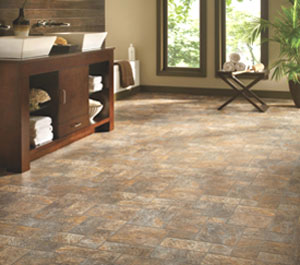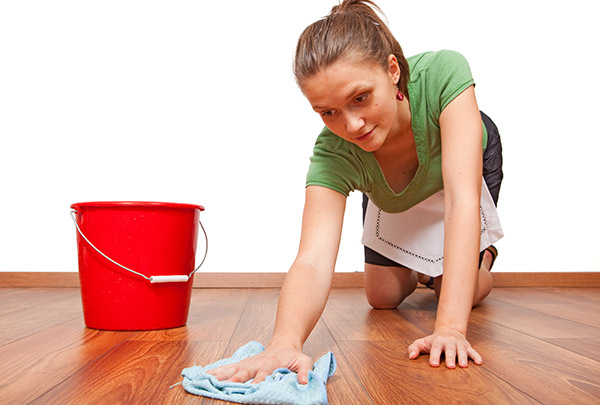Everybody has their private theory when it comes to How to clean and maintain vinyl flooring.

Bamboo flooring is renowned for numerous homeowners due to its benefits. It has actually come to be the significant choiced floor for organization as well as house owners whenever there is requirement for sustainability.
Nonetheless, bamboo much like timber, is susceptible to dents as well as splitting when humidity degrees change.
Are you thinking about bamboo flooring for your home? We will also go over the different types of bamboo flooring readily available on the market.
Types of Bamboo Flooring
There are 3 fundamental options: strand-woven, vertical, and also horizontal. Homeowners can select which type of bamboo flooring to get based upon their attributes. Likewise, the purchaser's intended visual influences the selected Bamboo flooring kind.
Engineered Bamboo Flooring
Both solid and also crafted bamboo flooring options are readily available. When the bamboo timber fits, it isn't easy to compare them.
However their distinctions are because of their production. Crafted bamboo timber has a thin plywood support.
Whether engineered or strong, bamboo flooring is durable, durable, and also attractive.
Engineered bamboo flooring utilizes the floating wood floor over a thin foam base. They may additionally remain in the kind of vast slabs. They are readily available in sizes up to 19 centimeters.
Solid - Straight Bamboo Flooring
You will observe that this type is almost the like upright bamboo flooring. Yet it has a minor variation. Horizontal bamboo is one of the most preferred kinds of bamboo flooring.
It is made by drying out huge strips of bamboo, cutting these larger pieces right into thinner strips, and then gluing them to create planks. The boards will after that go through pressure and heat to guarantee they are well attached.
All-natural bamboo has a lighter shade. Thus, the strips are frequently tarnished. While carbonized bamboo will be less difficult than normal bamboo, if you need a darker shade, it may do you excellent. It likewise offers the natural bamboo looks and a selection of choices.
Strand Woven Bamboo Flooring
Shredding the bamboo to extract the fibers is just one of the much more drawing action in producing strand-woven bamboo floors.
The bamboo fiber is commonly combined with a sticky after it's made to a pulp. The product is after that weaved and pressed together under terrific warmth, as the name suggests.
After making vertical and straight bamboo, the strips serve to create hair woven bamboo. The eco-conscious purchaser may find this feature appealing. The factor is that it ensures that the whole bamboo stalk creates extremely little waste.
Solid - Vertical Bamboo Flooring
Thin strips of dry bamboo wood glued up and down as well as pressed using high warmth and pressure produce this sort of bamboo flooring.
The thinnest side of the bamboo planks will be in an upright type. Then, a company bonding, pressing, as well as lamination will comply with. As a result of their method of signing up with, the bamboo strips feature a slim grain pattern.
The good idea about this sort of bamboo flooring is that it is very cost effective as well as sturdy. Likewise, it offers a classy and also classy floor finish. But it is not widely readily available.
When Picking Bamboo Flooring, functions As Well As What to Keep in Mind
With a multi-layered layer, bamboo flooring will certainly be quite resilient. Yet bear in mind that future touch-ups might require a more skilled flooring professional.
Likewise, using your surface will certainly make matching repair work less complicated once established in your house. The surface will certainly not last as long as manufacturing facility coatings.
Apart from that, right here are some interesting features of bamboo flooring.
Eco-Conscious
This flooring comes from an all-natural plant called the bamboo plant. When compared to other tree species used to make hardwood flooring, bamboo expands more as well as quicker.
Economical Upkeep
You can maintain bamboo flooring in good condition by cleaning and damp wiping. So regardless of being a lot more prone to scratches, bamboo flooring is really basic to preserve.
You might get bamboo floorings that are as good as new by sanding them down and also applying a fresh layer of paint.
Resilient
Bamboo flooring is not developed equal. There are many sorts of bamboo, and also the different techniques made use of to turn it right into slabs influence its sturdiness.
Thus, bamboo, like hardwood flooring, can end up being vulnerable to tear and put on over time. Likewise, scraping, splitting, as well as various other damage might take place. You can likewise sand some bamboo to appear like hardwood, but not all.
Bottom Line
It's straightforward to recognize why bamboo flooring has actually ended up being a lot more favored nowadays. For practically any residence, bamboo uses many solid and sound remedies for the setting. Bamboo flooring might be the ideal alternative for upgrading your flooring.
We will certainly also review the different kinds of bamboo flooring available on the market. Home owners can select which kind of bamboo flooring to get based on their characteristics. Straight bamboo is one of the most popular types of bamboo flooring.
While carbonized bamboo will certainly be much less hard than normal bamboo, if you need a darker color, it might do you excellent. After making horizontal as well as upright bamboo, the strips offer to create strand woven bamboo.
Bamboo Flooring
Manufacture of Bamboo Flooring
Stranded bamboo is made by shredding the bamboo stalks into small strands, which are compressed into sheets using heat and resin binders, then cut into planks to use as building materials. This form of flooring is available both as tongue-and-groove planks that are nailed down, as well as planks that float over the underlayment. This is a premium form of bamboo flooring, available in many colors.
Horizontal bamboo flooring is manufactured by cutting the strands into thin strips which are then glued together to form planks. This type of flooring has a "grain," since the long stalk fibers are visible in the flooring. This type of bamboo is not as hard or durable as stranded bamboo, but it can have a very striking appearance. It, too, is available both in nail-down planks and as floating floor planks.
Engineered bamboo flooring is made by bonding a thin layer of bamboo onto a plywood or MDF core. This flooring is comparable to engineered hardwood and is installed in the same way—usually with click-lock planks that float over a foam underlayment. It is the least expensive (and least durable) form of bamboo flooring, and it cannot be refinished.
Unless it is stained, most bamboo flooring has a natural blonde or amber color that resembles unfinished maple or birch, but darker tones are available through a process called carbonizing, which entails subjecting the planks to high temperatures. While the color can be very attractive, carbonized bamboo is softer than uncarbonized forms, and is more susceptible to scratching.
Eco-Friendliness
Environmentally conscious consumers are often drawn to bamboo as a wholly renewable resource. Unlike the hardwood lumber industry, where trees can take decades to mature, bamboo stalks grow so fast that there is little environmental liability to the harvest practices. Moreover, bamboo stalks that are cut simply continue to grow and replenish themselves so that they can be harvested.
But the manufacturing process creates other environmental concerns. Bamboo floor planks are manufactured by slicing or shredding the stalks of bamboo grass plants and then compressing the pulp back together using heat, pressure, and a resin-based adhesive identical to those used in many other flooring products. This adhesive often contains urea-formaldehyde that can outgas into the air.1
The level of adhesive used and the amount of toxins emitted will vary, depending on how the bamboo planks are manufactured. Cheaper products may contain more formaldehyde, while more expensive products may use alternative materials in the resins. The amount of formaldehyde used in bamboo flooring is similar to that found in engineered hardwood flooring or MDF sheathing, and it tends to be a problem only for sensitive individuals.2 But if this concerns you, look for bamboo products labeled as formaldehyde-free.
Bamboo Flooring Cost
This material is priced at about the same level as most hardwood floors. You can find bamboo flooring products ranging from about $2 to $8 per square foot, with a national average of $3.84 per square foot. Installation costs for bamboo flooring are much the same as for hardwood flooring. On average, figure on adding about $4 per square foot for installation labor in addition to the cost of materials. You should be able to get a good-quality bamboo installed for less than $10 per square foot, including materials and labor.
https://www.thespruce.com/benefits-and-drawbacks-of-bamboo-floors-1314694

I found that blog post about How to clean and maintain vinyl flooring when perusing the search engines. Sharing is nice. Helping others is fun. We recognize the value of reading our article about How to Care for Vinyl Flooring?.
 Amanda Bynes Then & Now!
Amanda Bynes Then & Now! Devin Ratray Then & Now!
Devin Ratray Then & Now! Tiffany Trump Then & Now!
Tiffany Trump Then & Now! Jaclyn Smith Then & Now!
Jaclyn Smith Then & Now! Ricky Schroder Then & Now!
Ricky Schroder Then & Now!